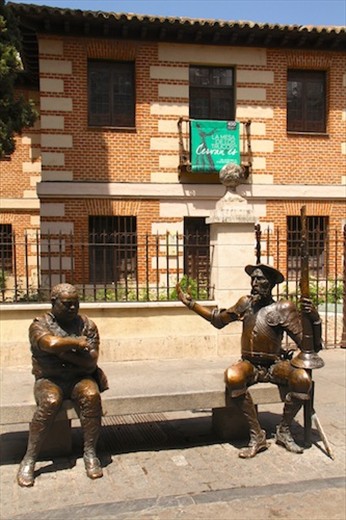A rental car can be either a blessing or a curse. On the one hand, having a car enables you to go wherever you like, whenever you want. At the same time it deprives you of the experience of using public transportation. In Europe that means trains – and we have all been told how efficient and inexpensive they are. Truth be told, it just ain’t so. Our high-speed flyer from Barcelona to Madrid cost us nearly $300. For the same price we could have rented a small, economical car (sin gasolina) for two weeks.
There are places that I just don’t want to drive – South America and SE Asia – for instance, and in big cities and ancient towns, where traffic and parking make having a car a liability. But driving in Spain is much like driving in the US. The roads are good, Spanish drivers (except those driving German luxury cars) are courteous, and although petrol is expensive – $7.00/gallon – cars are fuel-efficient.
We picked up our Opel Corsa, nicknamed Rocinante after Don Quixote's steed, in Toledo and will return it in Cadiz six weeks hence. Europcar had the bestrates, $140 a week with no drop off charge, but in the past both Hertz and Thrifty have surprised us with great deals. We returned the Magellan GPS unit we purchased in the States before we sailed for Barcelona. Despite the salesman’s guarantee that we could download European maps, it wasn’t true. We bought a Garmin in Madrid and rely on “Sir Clive” and his oh-so British directions for guidance.

Spanish countryside
We have been able to visit several World Heritage sites that would have been logistic nightmares without our own wheels, places like Aranjuez, Cuenca and Alcala de Henares, birthplace of Cervantes. It has given us a chance to see the Spanish countryside in a way that would have been impossible from a train window. And we can stop to picnic and birdwatch whenever we want.
